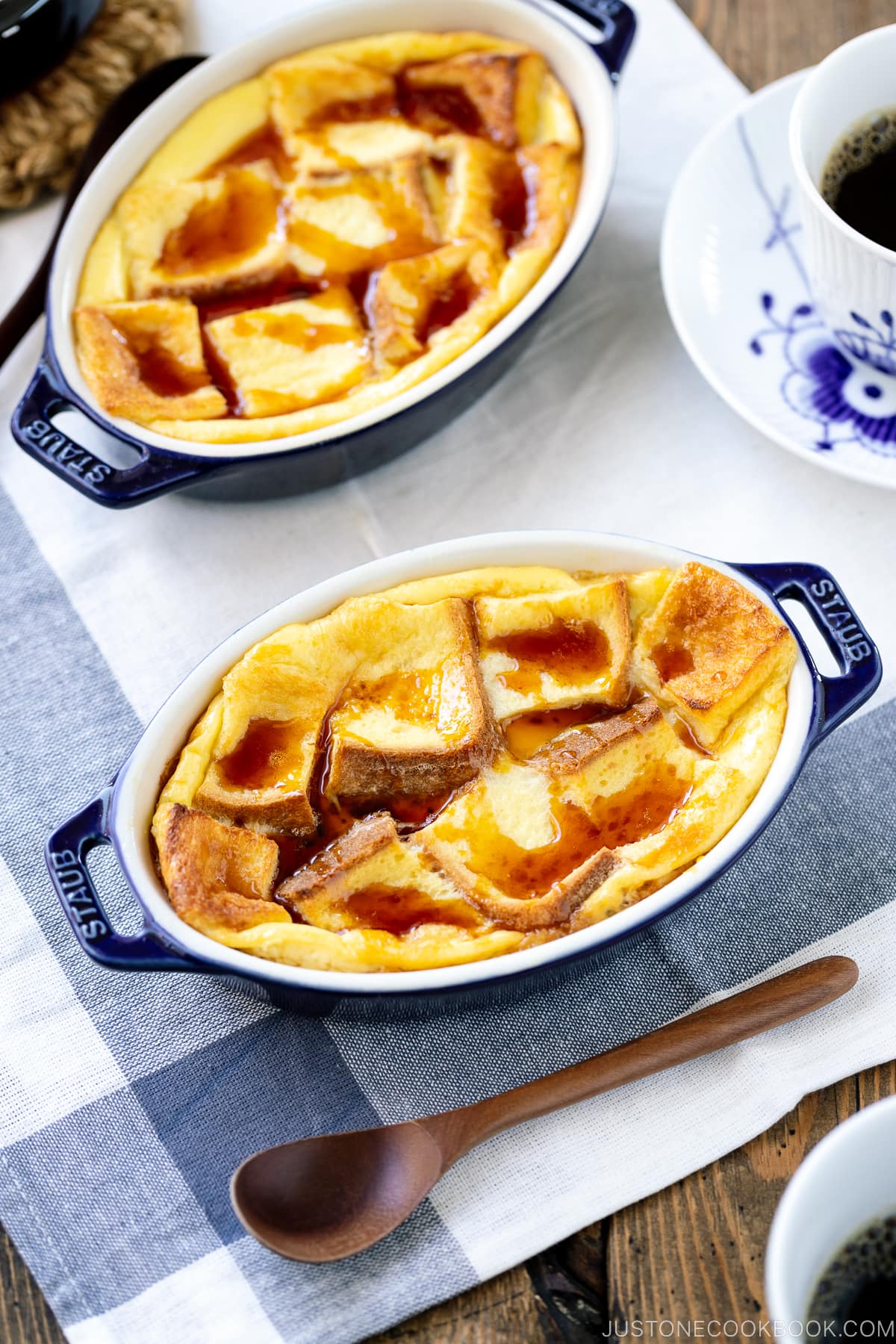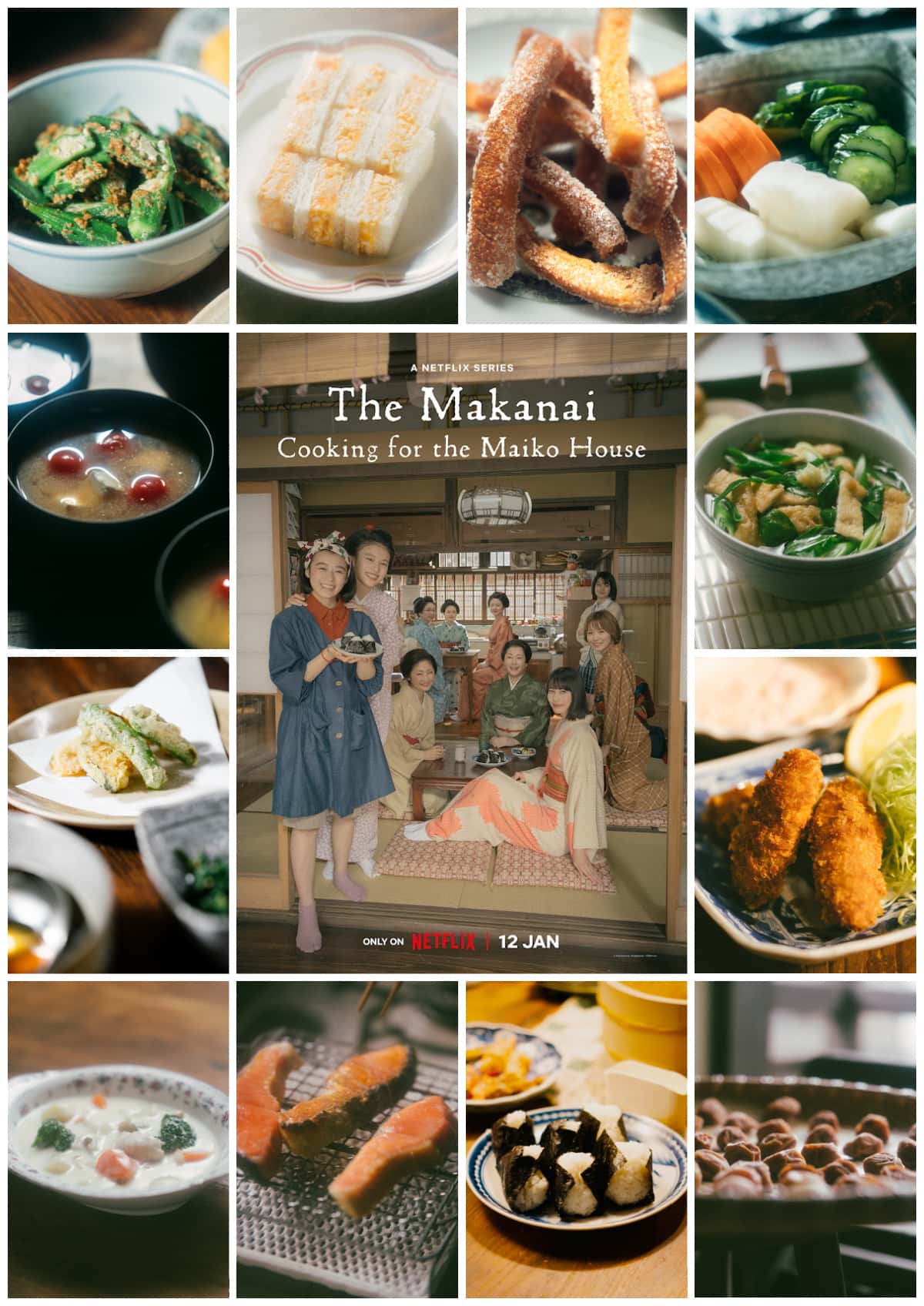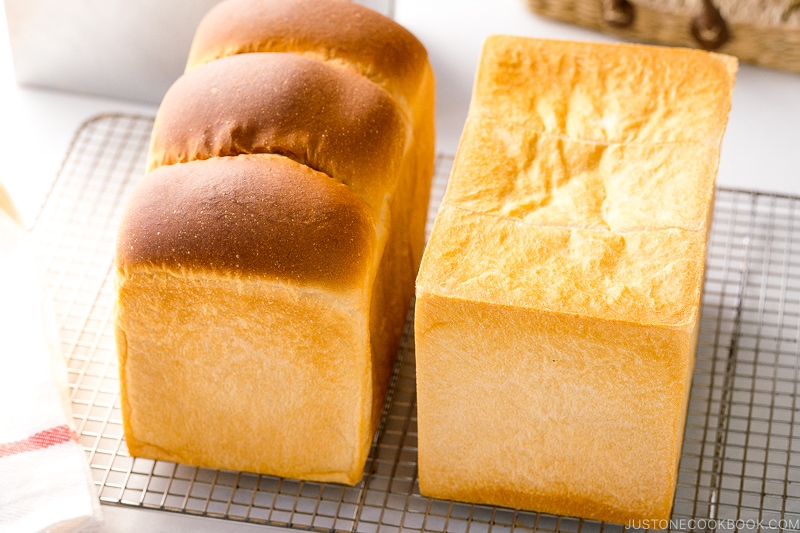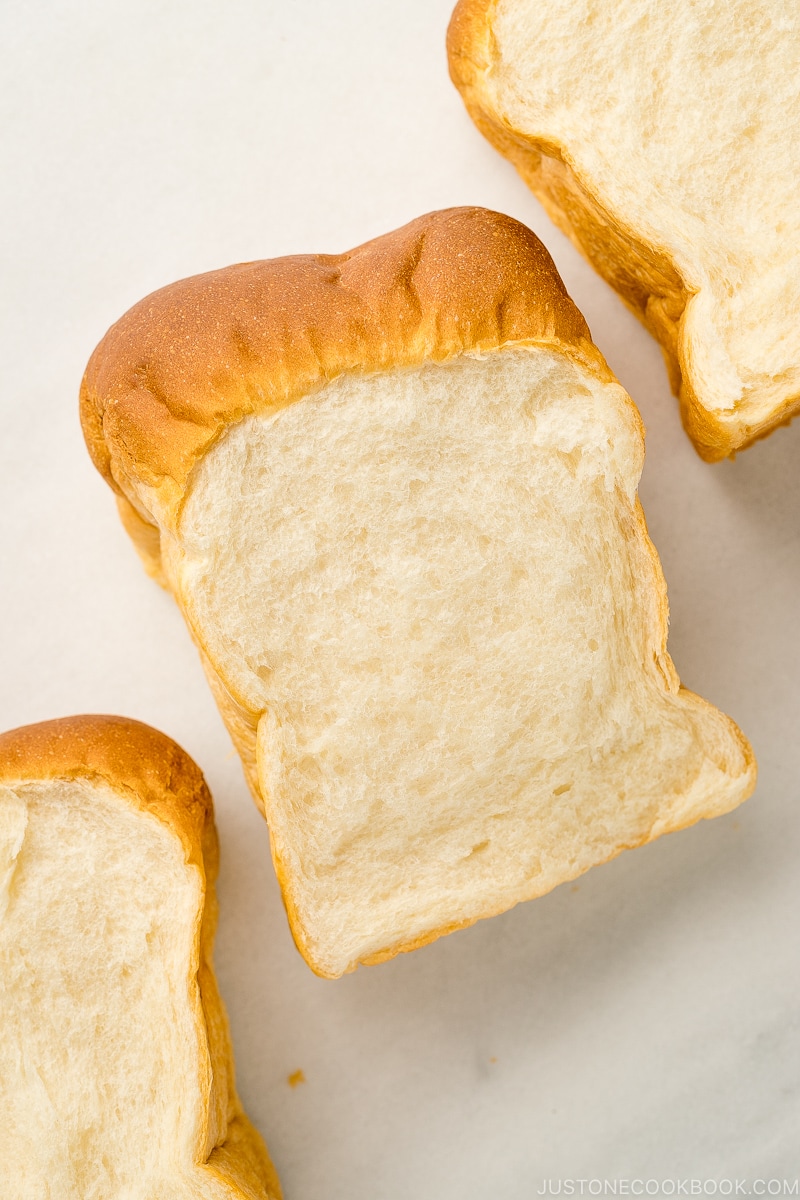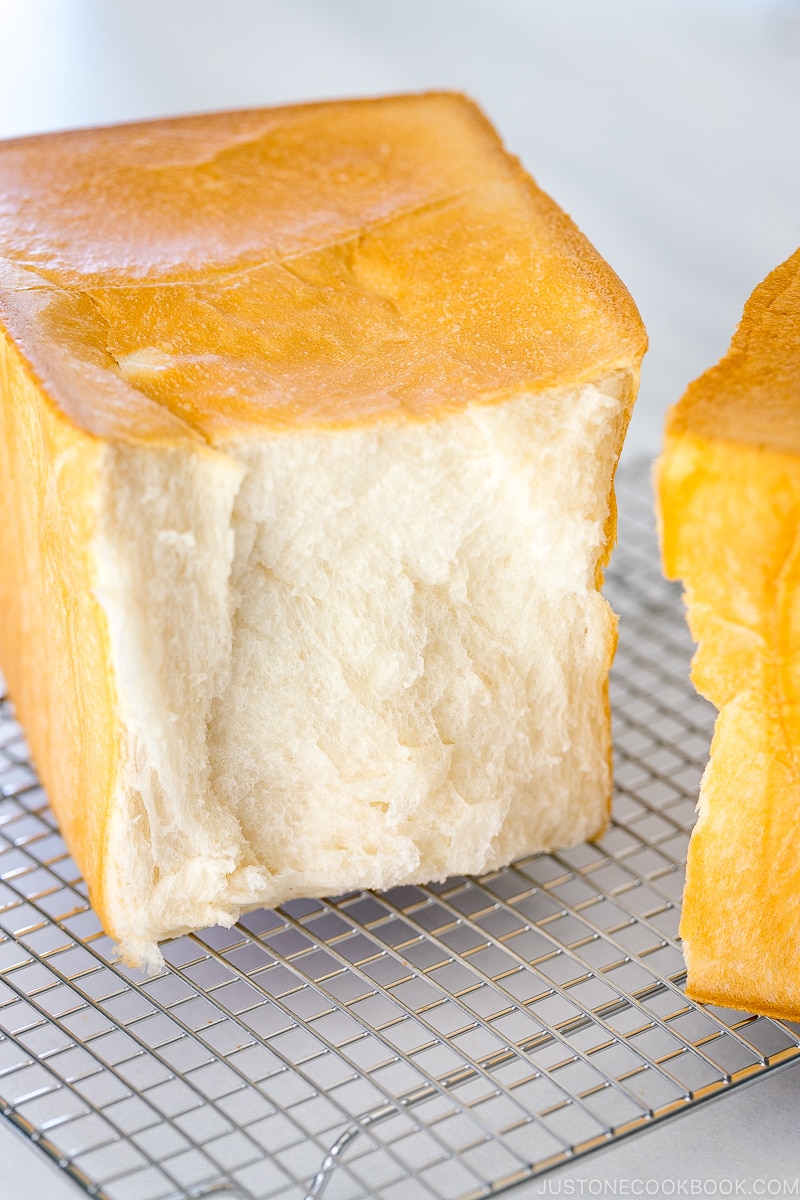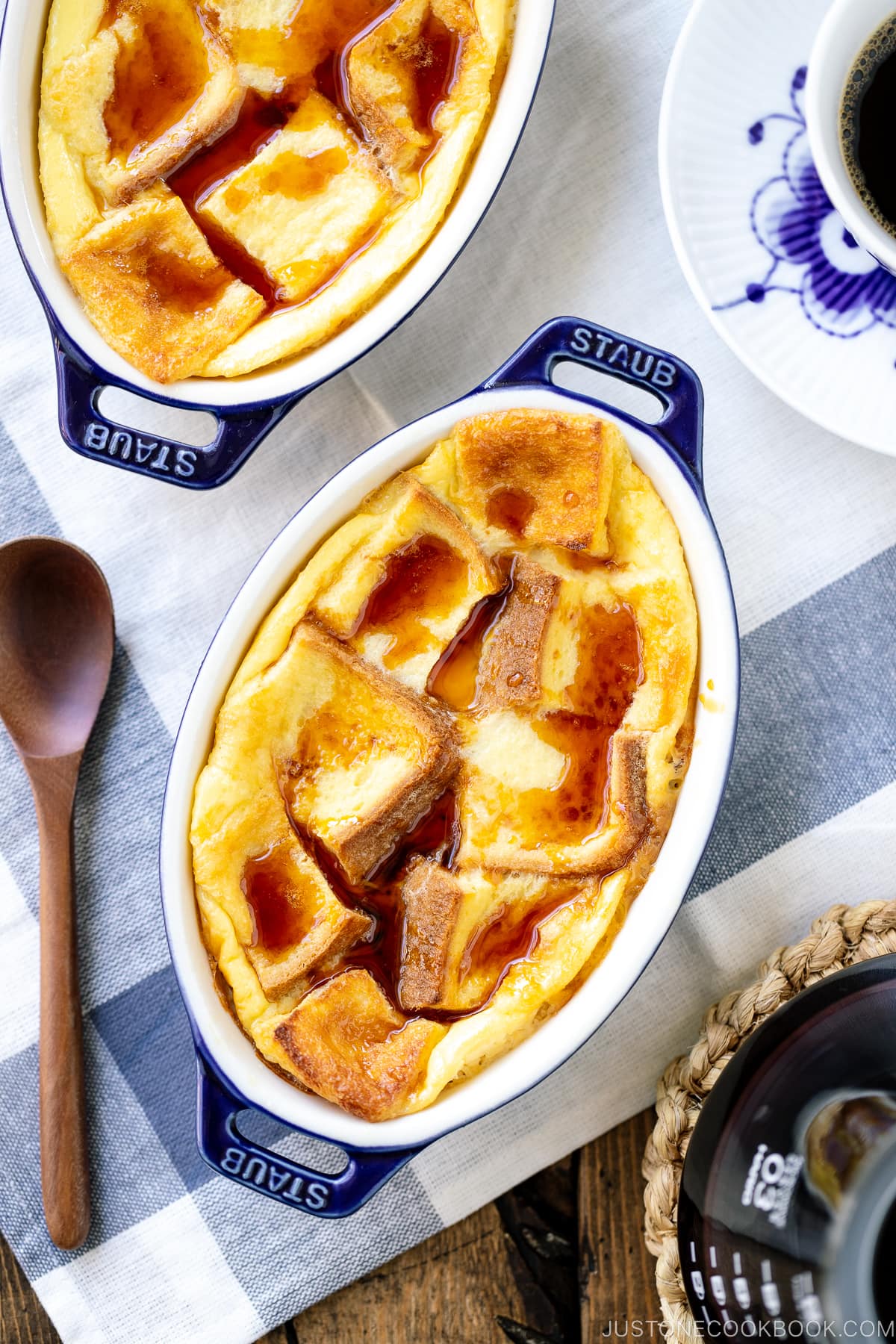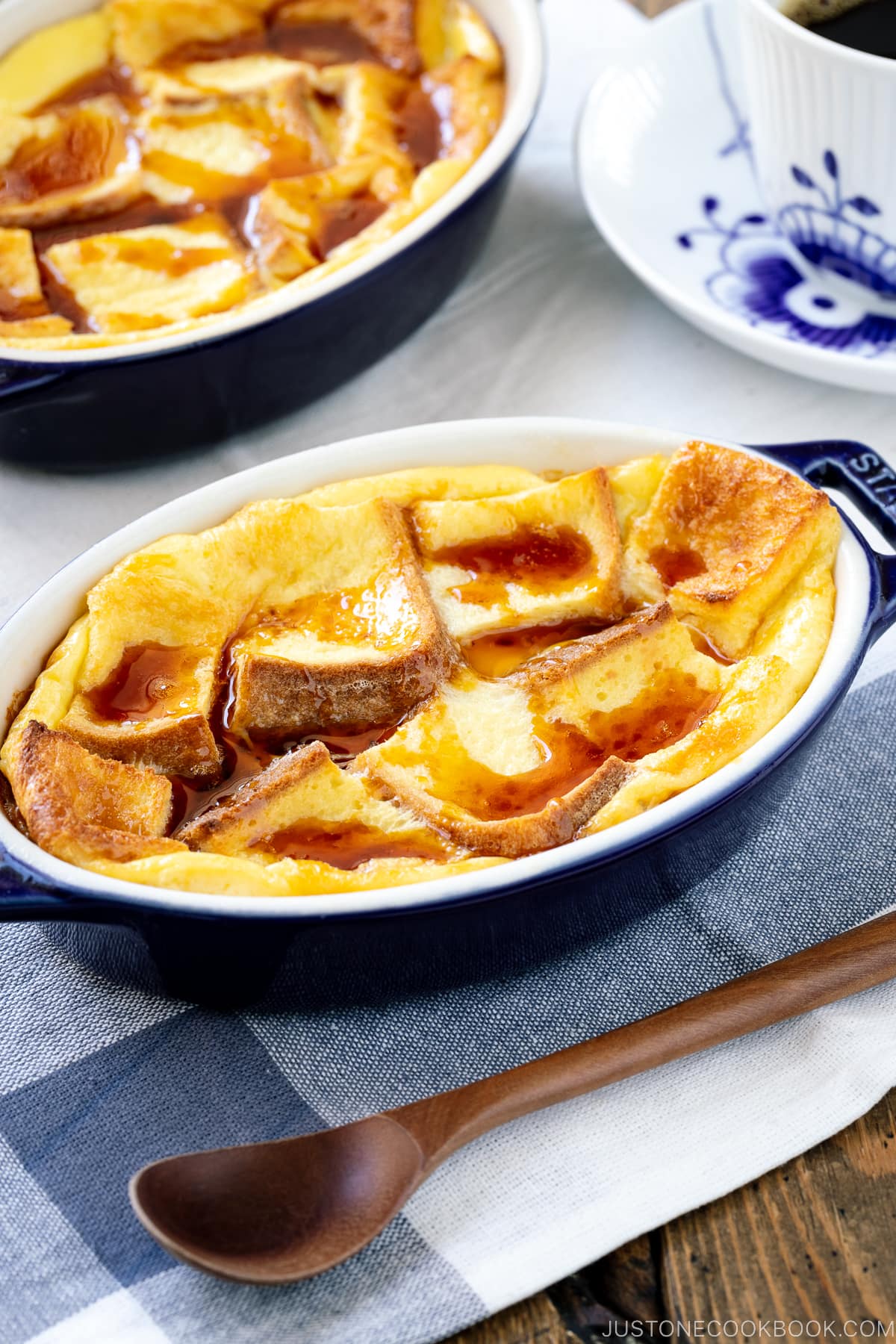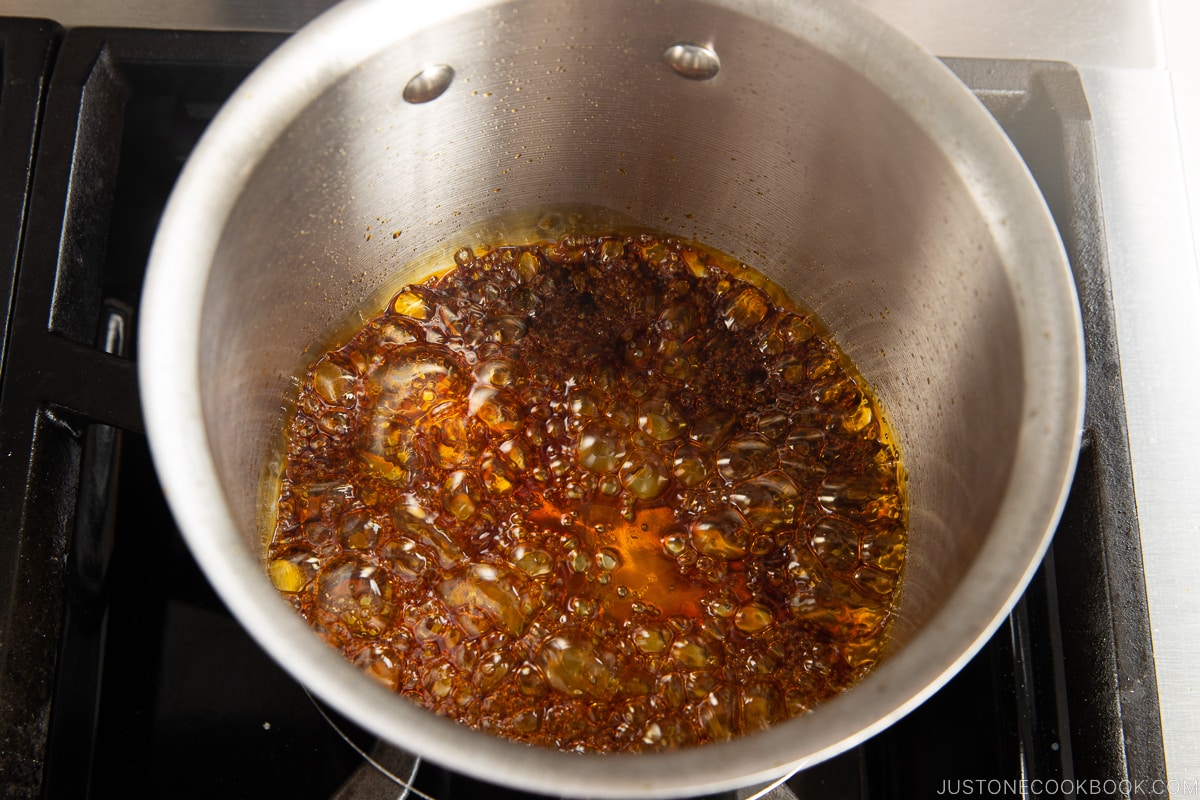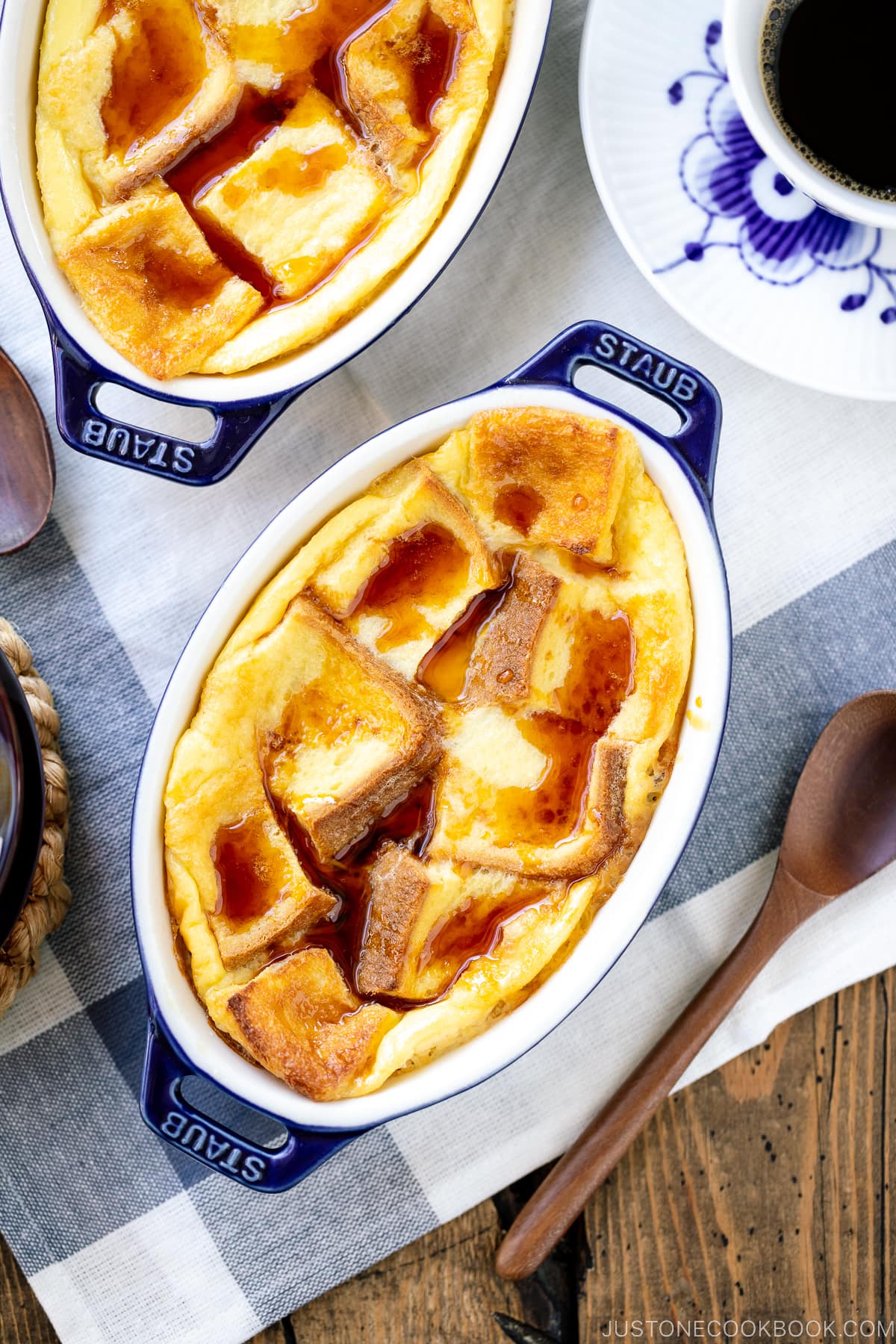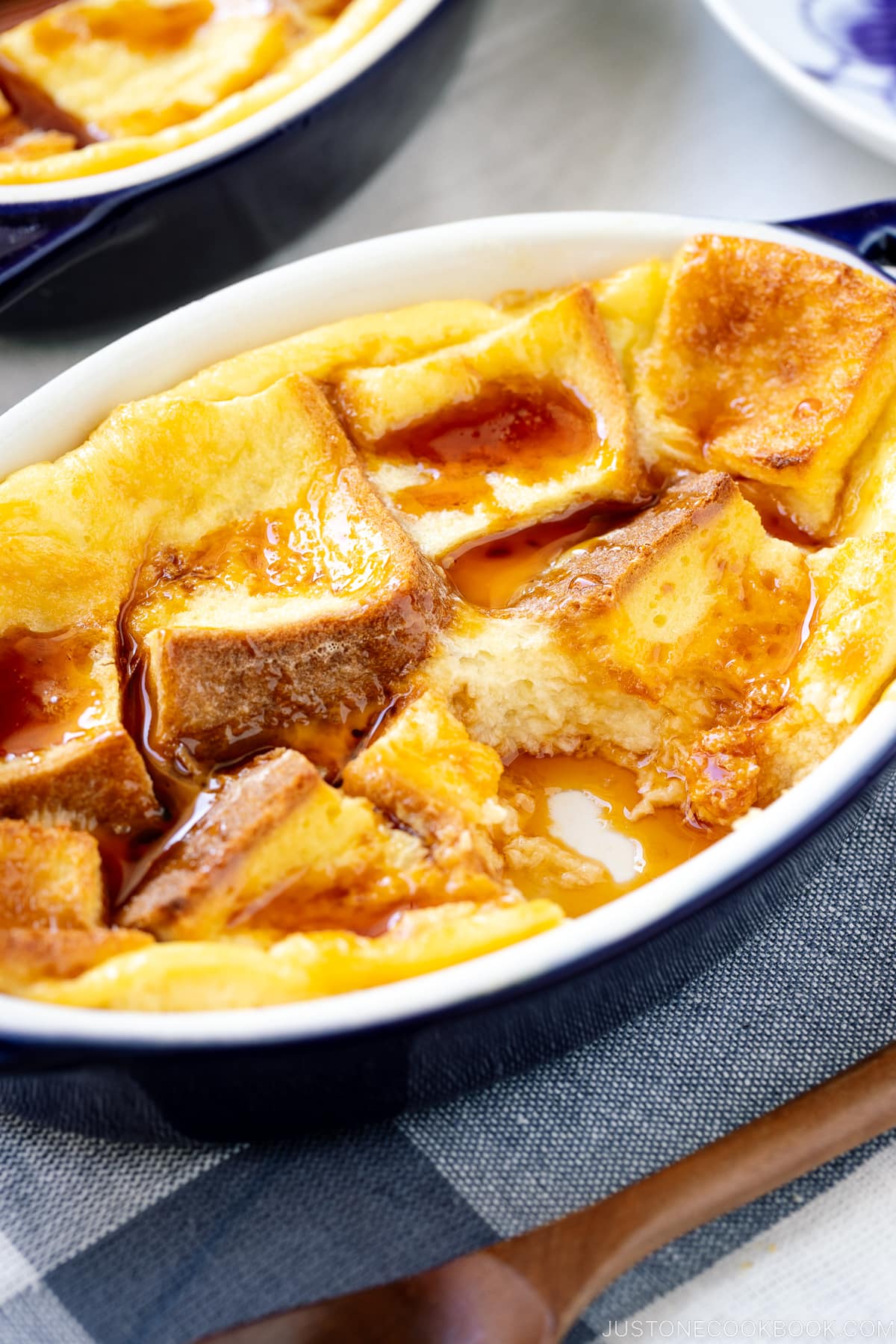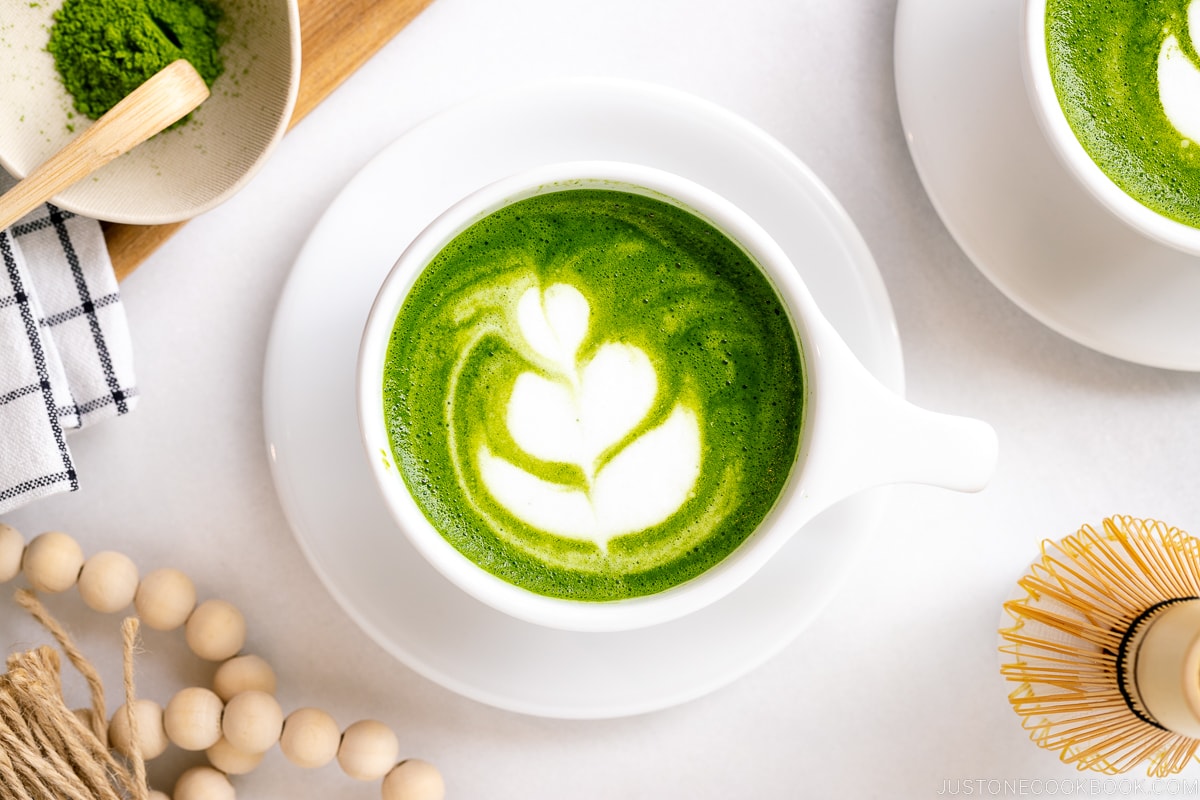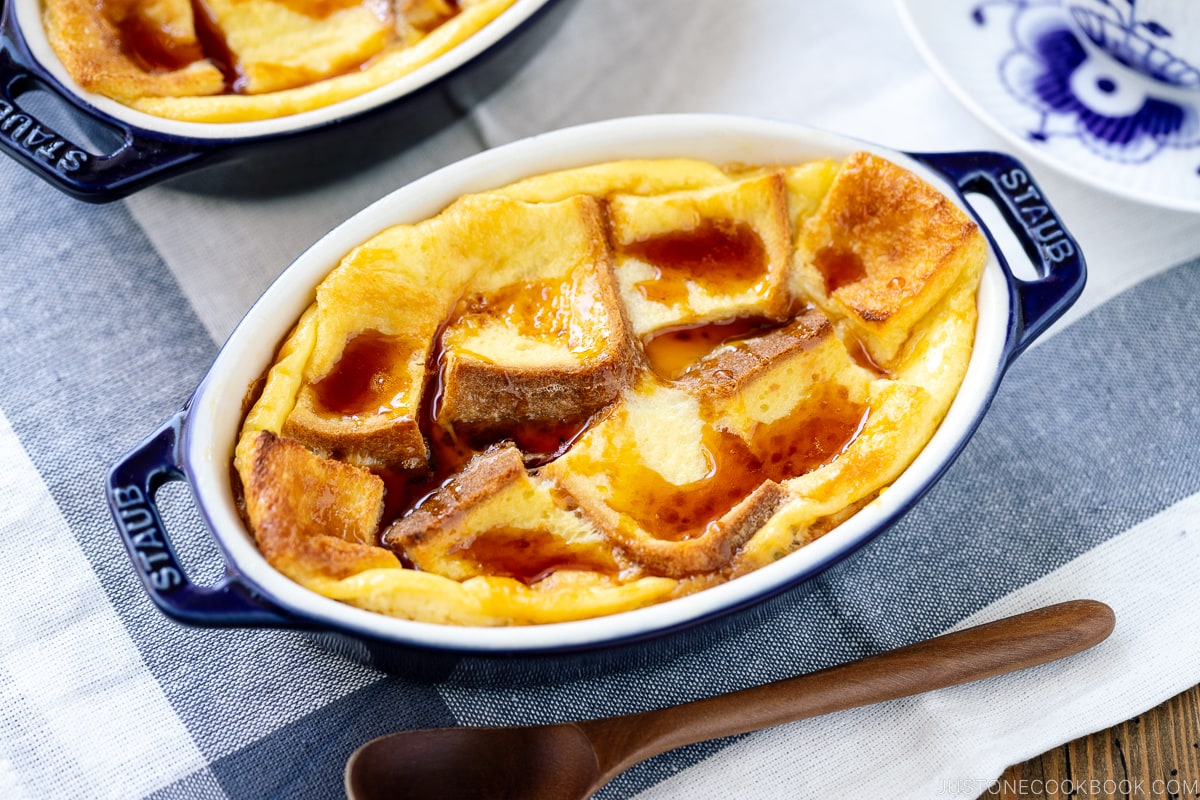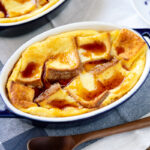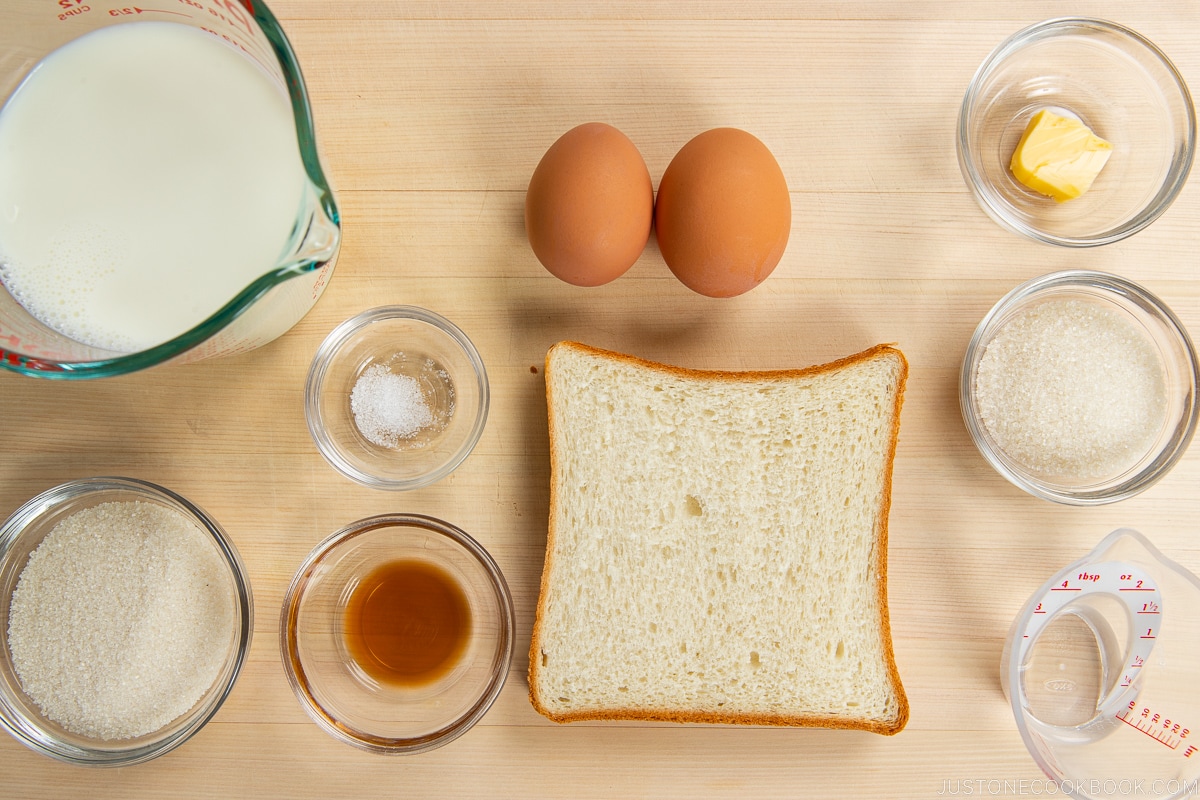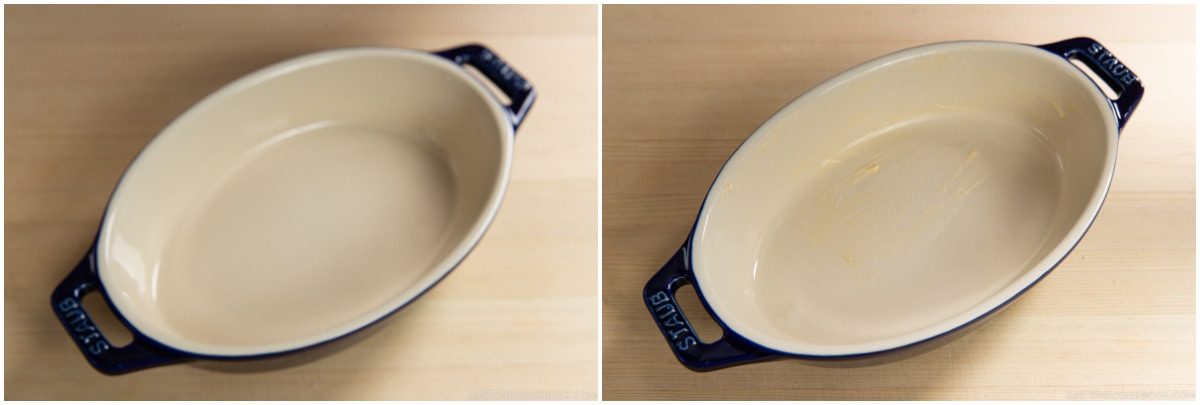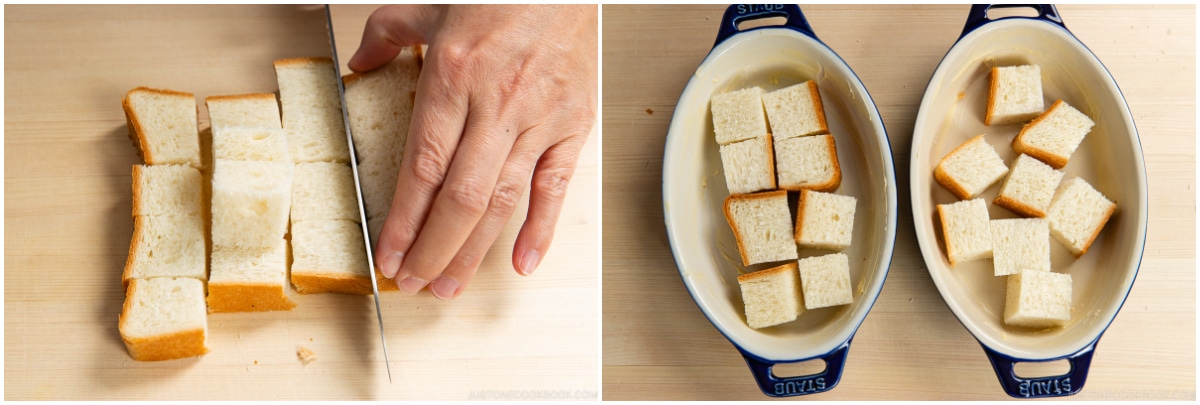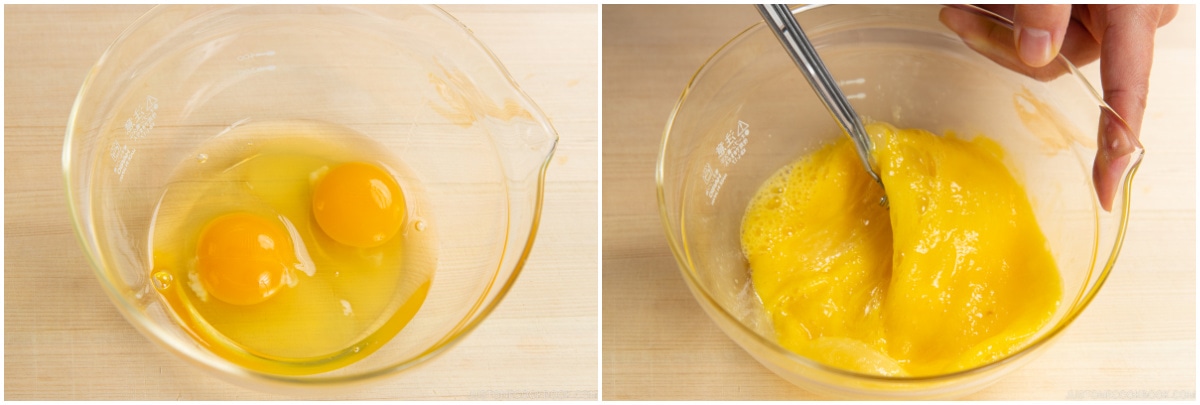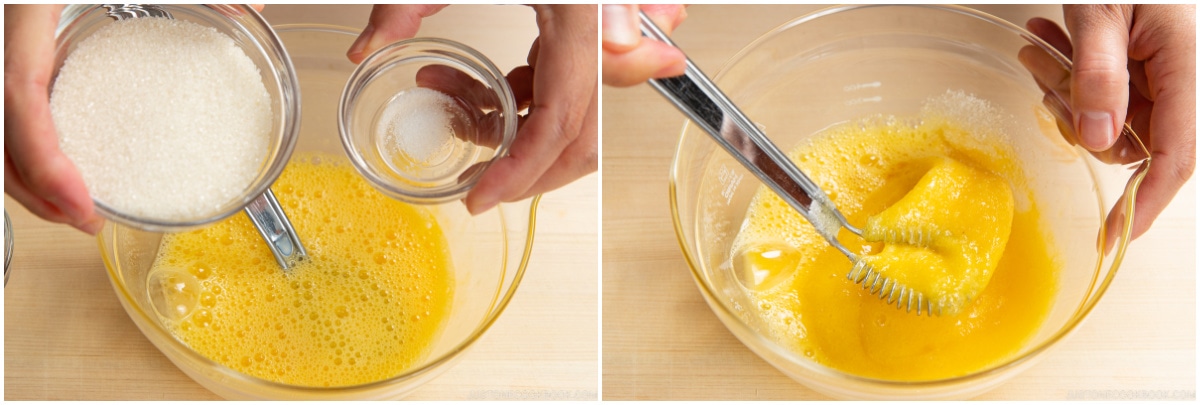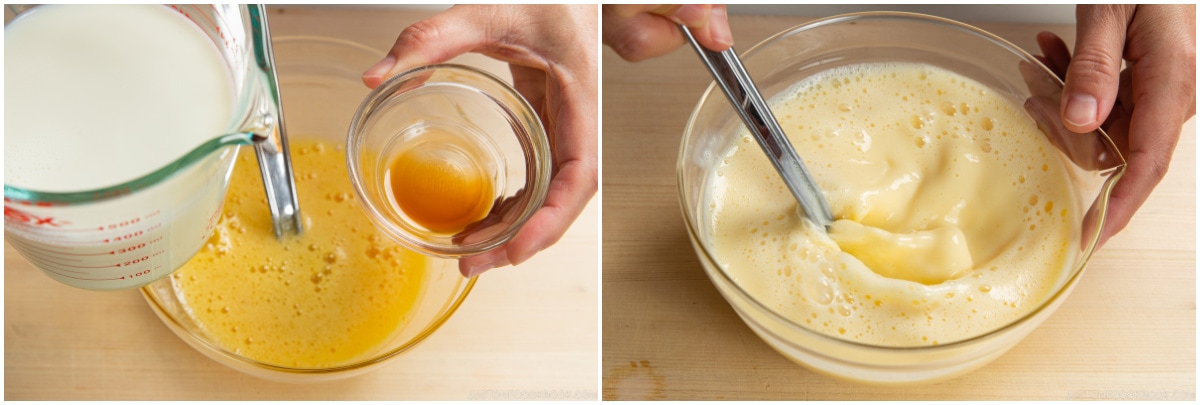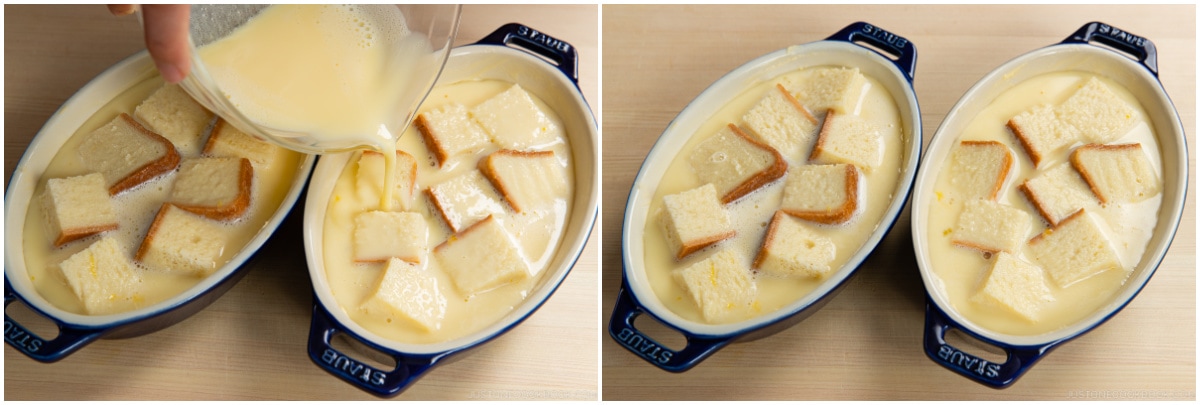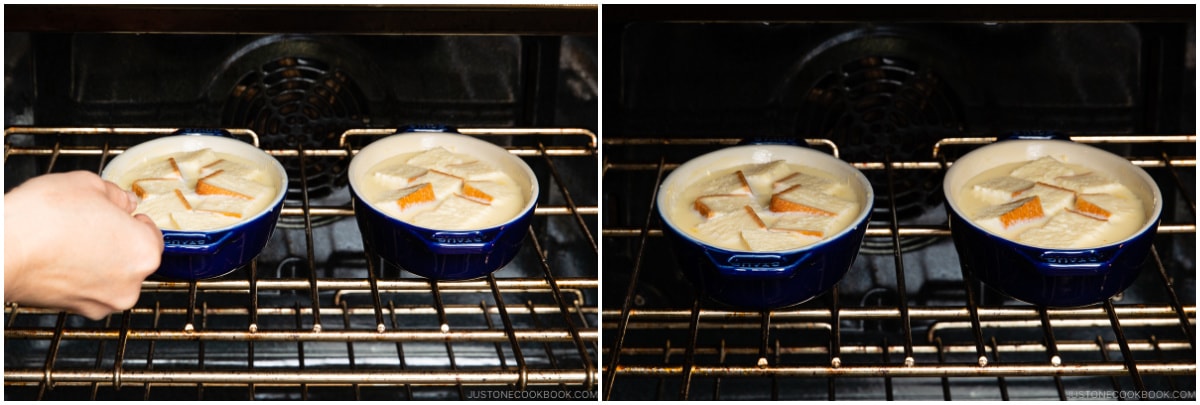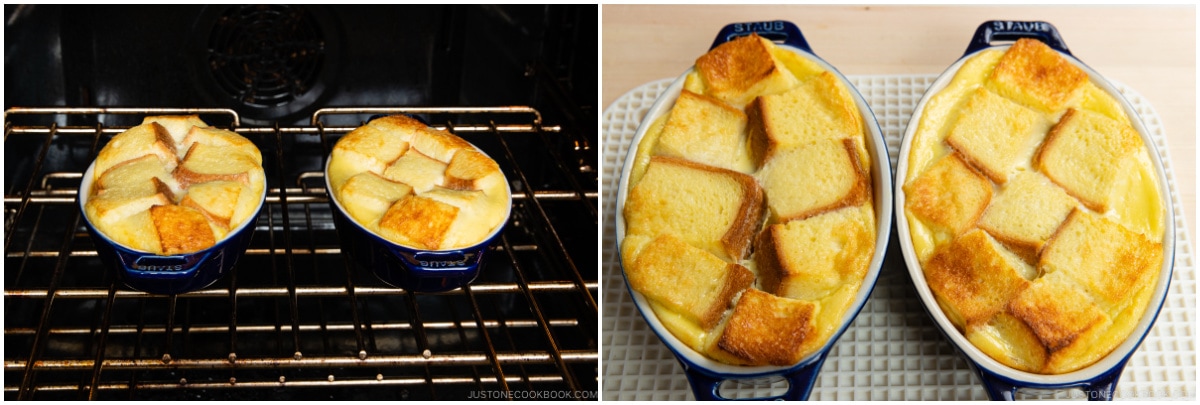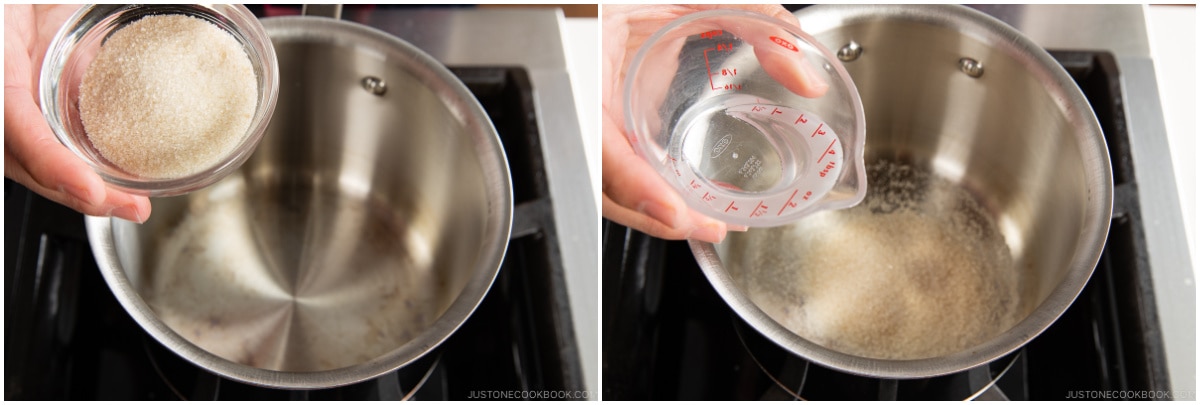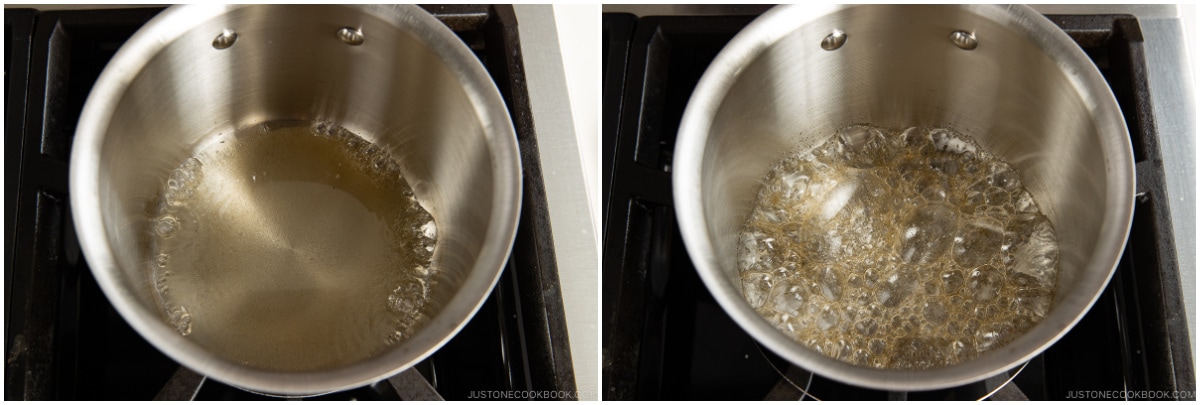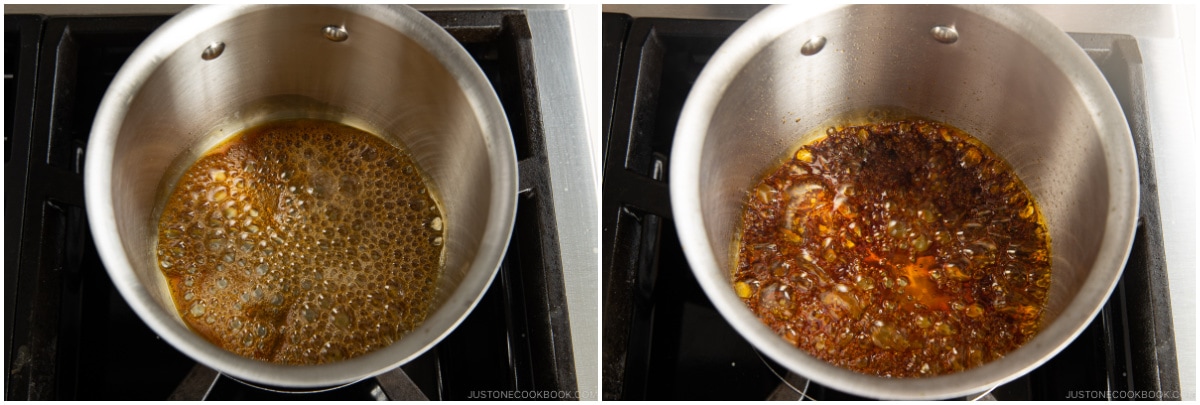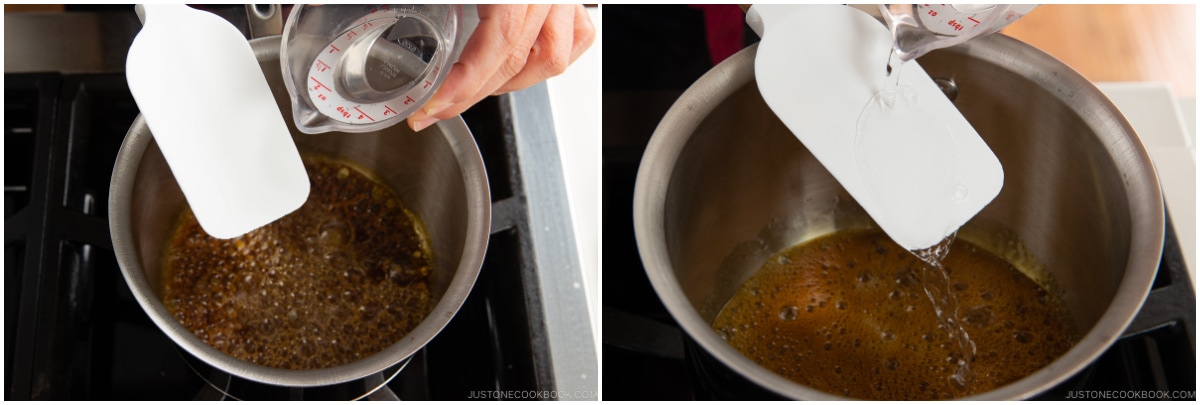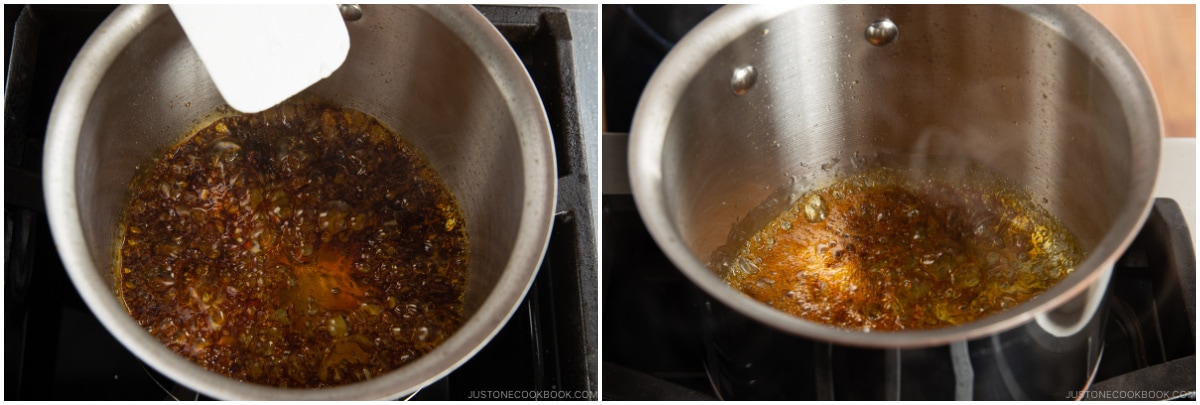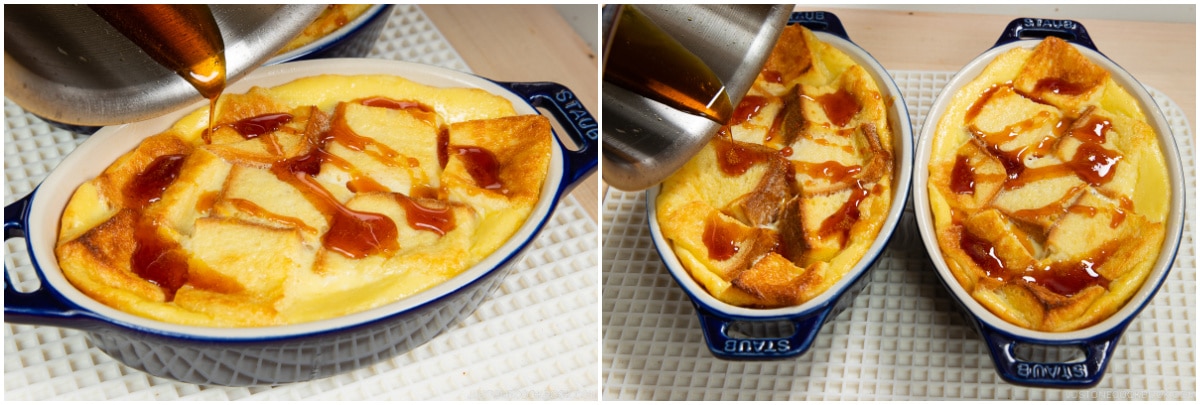One of the most memorable food scenes from the Makanai: Cooking for the Maiko House for me was the Pan Pudding (パンプディング) that Kiyo made for Tsurukoma. It seriously leaves us drooling, especially when Kiyo swirls the nicely brown caramel sauce into the bread custard. Since the release of this popular Netflix series, I have received quite a lot of requests for the recipe from JOC readers. So I took it up as a fun project to replicate the pan pudding at home, with the aim of achieving a comparable texture and look shown in the act. Here I am sharing my version of pan pudding, and I hope you enjoy this recipe as much as we did!
What is Pan Pudding?
Pan Pudding (パンプディング) is a Japanese milk bread pudding. The Japanese call bread pan (パン) so we call bread pudding “pan pudding.” In Japan, pan pudding is typically made with Japanese milk bread called Shokupan. Soft and light as a cloud and fluffy as cotton, Japanese Milk Bread is the most tender and moist Pullman loaf bread you’ll find. Therefore, when you make bread pudding with Japanese milk bread, the texture should resemble Purin, the Japanese custard dessert similar to crème caramel or flan. The refined soft crumbs absorb the delicious custard and become incredibly tender and almost velvety. The shokupan practically melts away when baked in the custard. Besides Japanese milk bread, the rest of the ingredients are the same: eggs, milk, and sugar. I tried to make this recipe as close to how Kiyo made it in Episode 3 of the Makanai: Cooking for the Maiko House. Her pan pudding definitely has more custard than the typical pan pudding. In fact, Kiyo’s version uses probably half the amount of bread typically called for in standard bread pudding.
How to Make Pan Pudding
Ingredients You’ll Need
Japanese milk bread (shokupan) – I highly recommend making your own shokupan if you can’t purchase shokupan locally at a Japanese (Chinese or Korean) grocery store. Eggs Sugar Salt Vanilla extract Whole or reduced-fat milk Butter – for greasing the baking dish(es) Caramel Sauce – sugar, room temperature water, and hot water
Baking Dish
I used two individual oval-shaped gratin baking dishes, just like how it was done in The Makanai. The gratin dishes I used for this recipe measure 7 inches x 4½ inches x 1¼ inches (about 18 cm x 11.5 cm x 3 cm) and hold about 12 fluid oz (360 ml) each. The benefit is that the sides of these baking dishes are shallow so it’s easier to brown the top. It is also nice to have individual servings as it keeps the bread pudding hot. If you don’t have two individual gratin dishes of a similar size to mine, you can use an 8-inch x 8-inch (20 x 20 cm) baking dish. The surface area is slightly bigger so the custard mixture will fill in the space, resulting in more custard parts. Also, the sides of the square baking dish tend to be taller, which will prevent the bread pudding from browning easily due to a lack of good hot air circulation. It’s not a bad thing, but just be aware of the differences between the use of these baking dishes.
Overview: Cooking Steps
The Bread-to-Custard Ratio
When I was testing the recipe, I found the most tricky part was the bread-to-custard ratio. I want it to be custardy (need a good amount of eggs) but it needs enough liquid so it will resemble purin, and not so much “bread.” Initially, I put too many pieces of bread in one baking dish. They absorbed all the custard mixture and ended up like a standard bread pudding. It tasted great but was firm than Kiyo’s pan pudding and didn’t have the right texture. It was one of those “aha” moments when I finally figured out the perfect ratio for both the shokupan bread and the custard mixture. The revelation comes down to the thickness of the shokupan slice. The amount of custard mixture works best with a 2 cm (¾ inch) thick slice meant for toast. If you get Japanese milk bread, buy a square shokupan loaf that is precut into six slices that are 2 cm (¾ inch) thick (6枚切りトースト). If you use a thinner shokupan slice meant for sandwiches, the bread doesn’t absorb enough custard mixture, leaving too much of it in the baking dish, resulting in a more eggy-like texture. If you use a thicker slice or more bread, it will be too bread-heavy. The bread-to-custard balance is really the key to that melt-in-your-mouth texture!
The Caramel Sauce
You might be familiar with caramel sauce if you have made Purin before. For those who haven’t, I want to explain a little bit about caramel sauce here. Wet caramel is made by mixing granulated sugar with a small amount of water. The whole purpose here is to boil the sugar syrup to caramelize it and achieve a caramel color. For this pan pudding recipe, we aim for a medium to dark amber color. Before you begin, here are a few tips if you’ve never made it before:
Use a heavy-bottomed, light-colored saucepan so you can see the progress of the caramel sauce. Don’t use a pot with a nonstick coating because the pot will be exposed to medium-high heat and the pot is too thin (with hot spots). Do not mix with a utensil because that will cause the sugar to crystallize. Do not touch the caramel; just swirl the saucepan to mix it. Keep an eye on the caramelization process at all times.
When the caramel is the optimal medium to dark amber color, you need to stop the caramelization process. Otherwise, the caramel will continue to darken in color, become more bitter, and might even burn. You stop the caramelization process by pouring a small amount of hot water, which loosens up the caramel consistency. The hissing sound is probably one of the scariest kitchen moments you may experience. Don’t be scared. Protect your hand/fingers when adding hot water following my instructions in the recipe card precisely. You must make the caramel sauce right before drizzling; otherwise, it will solidify before you are able to pour.
Cooking Tips
Tip 1: Don’t change the bread-to-custard ratio.
As I mentioned in the previous step, you would need to follow this exact ratio to achieve a soft, velvety texture for the pan pudding.
1 slice of shokupan, 2 cm (¾ inch) thick (6枚切りトースト) 2 large eggs ¼ cup (50 g) sugar 1½ cups (360 ml) milk
Tip 2: Let the bread absorb half the custard mixture before adding the rest.
The bread needs just a few minutes to absorb the custard mixture. If the bread pieces float, don’t worry. They will slowly absorb the custard mixture so you can add the rest after a few minutes.
Tip 3: Don’t overcook the bread pudding.
Overcooking may cause curdling and you want to avoid that. To determine doneness in egg dishes such as bread pudding and quiche, make sure the inserted toothpick comes out clean and the internal temperature should reach 160ºF (71ºC) when measured with a food thermometer. You will notice that pan pudding is beginning to rise up around the sides of the baking dish and slowly turns golden brown. When you shake it, the bread pudding will giggle slightly at the center. Not golden brown yet? You can switch to a broiler and broil for 1-3 minutes.
Can I use a different type of bread?
You definitely can, but please know that the outcome will be different. As you may know, bread pudding can be made with different types of bread—French baguette, brioche, challah, sourdough… and it’s delicious in its own way. If you really want to make the pan pudding shown in The Makanai, it’s important to use shokupan because this type of crumb absorbs the custard and yields a super fluffy, delicate texture. As you see in Kiyo’s pan pudding, it’s very custardy and less “bread” like.
Do I need to use old stale bread?
You can use old shokupan that has been sitting around for 3-4 days. However, unlike other types of bread, shokupan doesn’t become dry or stale to a similar extent. Even old shokupan still has more moisture than other bread. For that reason, I don’t find it necessary to purposely use old shokupan.
I don’t have the same individual baking dishes shown in The Makanai. Any recommendations?
To make the pan pudding similar to the Makanai, I used similar gratin dishes measuring 7 inches x 4½ inches x 1¼ inches (18 cm x 11.5 cm x 3 cm) to create this recipe. Two important things to remember when you look for a baking dish:
Choose a baking dish with enough space to give the bread pieces plenty of wiggle room prior to baking. You might think there’s not enough bread in the dish, but the bread will need space to expand to about 1½ times its original size as it bakes. If the pieces are already snug before baking, your dish is too small; the bread won’t have room to expand and will overcrowd the dish. At the same time, there shouldn’t be too much space between the bread pieces, either. In either case, adjust the size of the baking dish instead of adding more bread or custard. The baking dish should be at least 1 inch (2.5 cm) deep. Before baking, the bread pieces are floating in the baking dish as they gradually absorb the custard mixture. The bread will gradually soak up more custard mixture, but when fully saturated, the leftover custard mixture will fill up the space between the bread pieces. This is the ideal situation.
Can I use other types of milk?
I recommend using whole or reduced-fat milk for this recipe. If needed, you can use another type of milk, but the taste will be different.
Can I reduce the amount of sugar in the custard?
I tried making this recipe with both 2 tablespoons and 3 tablespoons of sugar (with the caramel sauce on top). Both Mr. JOC and I agree that 4 tablespoons (1/4 cup) of sugar is just the right amount for people who enjoy Asian sweets because western sweets can be overly sweet. You can certainly cut down on the sugar if you prefer. Please adjust according to your own preference.
Do I really need to make the caramel sauce?
You don’t have to, but you may want to increase the sugar a little bit for the custard.
What to Serve with Pan Pudding
Japanese Iced Coffee Cold Brew Coffee Chai Matcha Latte
Wish to learn more about Japanese cooking? Sign up for our free newsletter to receive cooking tips & recipe updates! And stay in touch with me on Facebook, Pinterest, YouTube, and Instagram.
